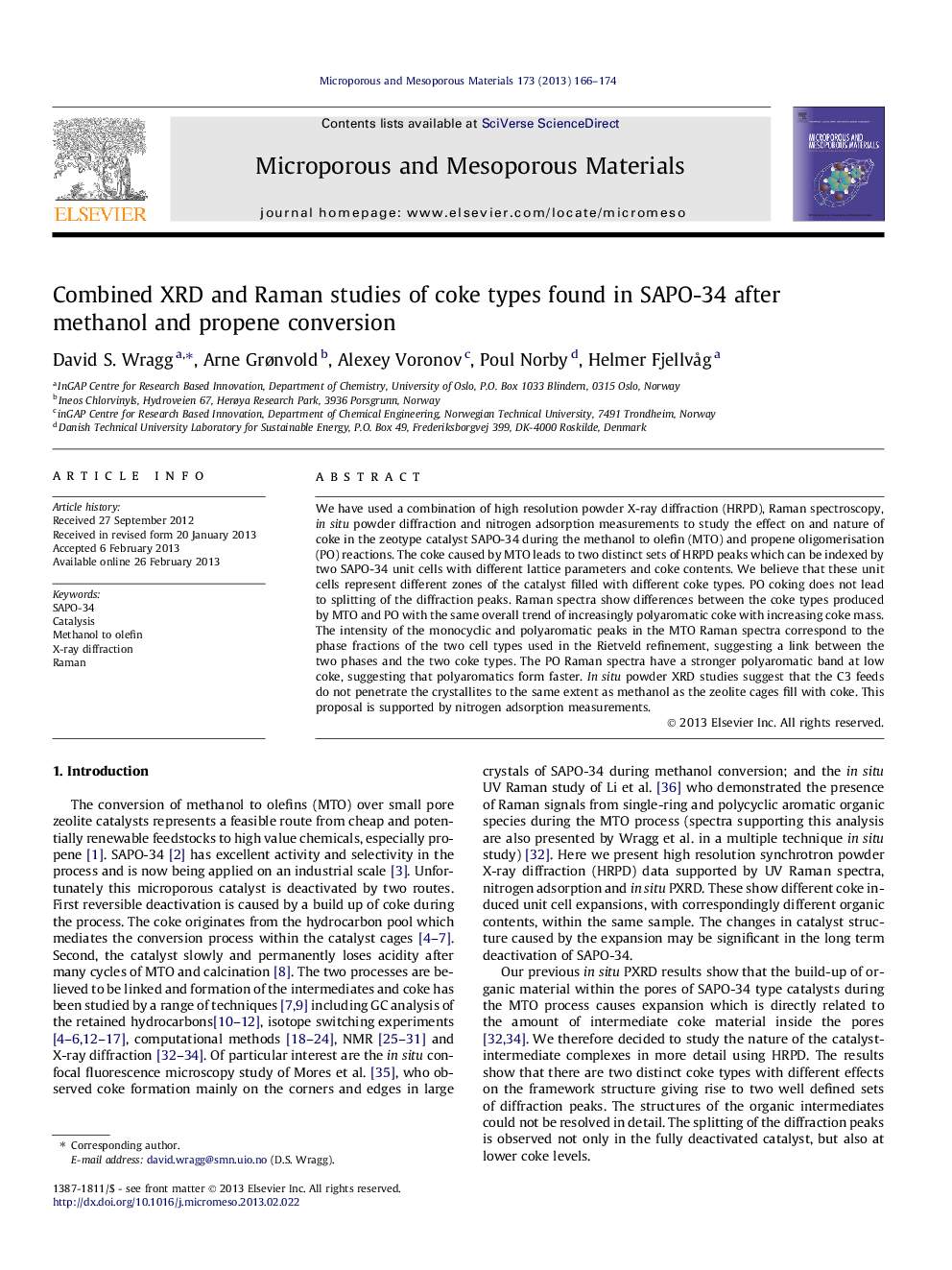| کد مقاله | کد نشریه | سال انتشار | مقاله انگلیسی | نسخه تمام متن |
|---|---|---|---|---|
| 73516 | 49062 | 2013 | 9 صفحه PDF | دانلود رایگان |

We have used a combination of high resolution powder X-ray diffraction (HRPD), Raman spectroscopy, in situ powder diffraction and nitrogen adsorption measurements to study the effect on and nature of coke in the zeotype catalyst SAPO-34 during the methanol to olefin (MTO) and propene oligomerisation (PO) reactions. The coke caused by MTO leads to two distinct sets of HRPD peaks which can be indexed by two SAPO-34 unit cells with different lattice parameters and coke contents. We believe that these unit cells represent different zones of the catalyst filled with different coke types. PO coking does not lead to splitting of the diffraction peaks. Raman spectra show differences between the coke types produced by MTO and PO with the same overall trend of increasingly polyaromatic coke with increasing coke mass. The intensity of the monocyclic and polyaromatic peaks in the MTO Raman spectra correspond to the phase fractions of the two cell types used in the Rietveld refinement, suggesting a link between the two phases and the two coke types. The PO Raman spectra have a stronger polyaromatic band at low coke, suggesting that polyaromatics form faster. In situ powder XRD studies suggest that the C3 feeds do not penetrate the crystallites to the same extent as methanol as the zeolite cages fill with coke. This proposal is supported by nitrogen adsorption measurements.
Combined XRD and Raman investigations reveal that the effect of coke from the MTO process on the zeotype SAPO-34 leads to two distinct crystal structures. The variation of the weight percentages of the two structures follows that of the polyaromatic and monocyclic aromatic coke signals in Raman spectra. No splitting of the structure is observed under propene feed and in situ XRD data show that C3 feeds are probably confined to the catalyst surface, causing little expansion of the SAPO-34 framework.Figure optionsDownload as PowerPoint slideHighlights
► MTO coke takes 2 ordered forms- diffraction peaks are indexed by 2 unit cells of different sizes.
► Raman spectra show two types of coke signal which vary with the phase fractions of the two cells.
► PO coke is confined to the outer layers of the catalyst.
► In situ XRD shows little expansion for C3 feeds- such feeds cannot diffuse well into the catalyst.
Journal: Microporous and Mesoporous Materials - Volume 173, June 2013, Pages 166–174